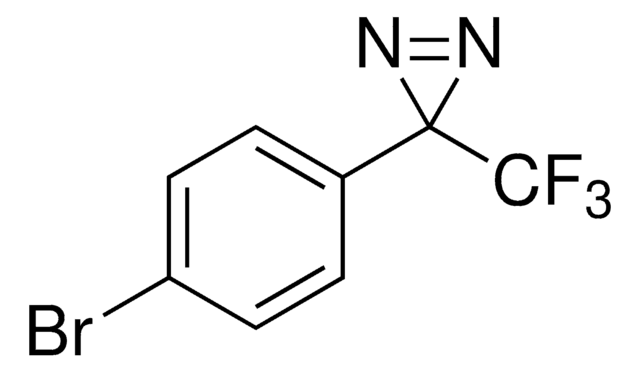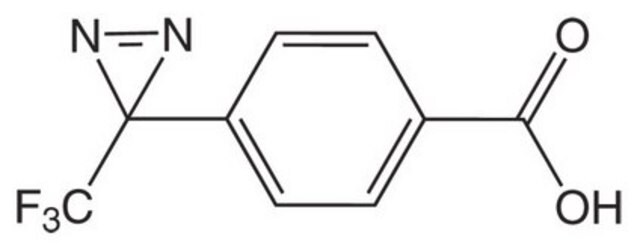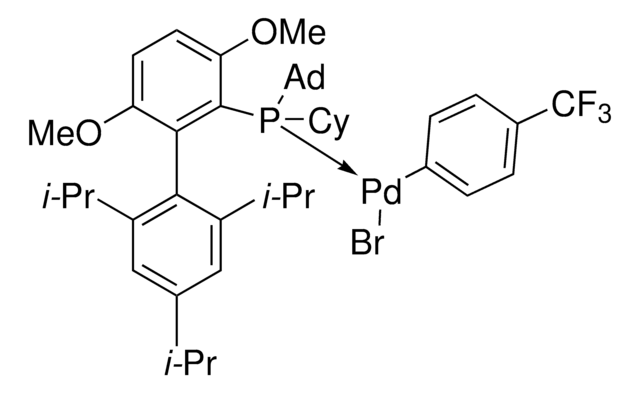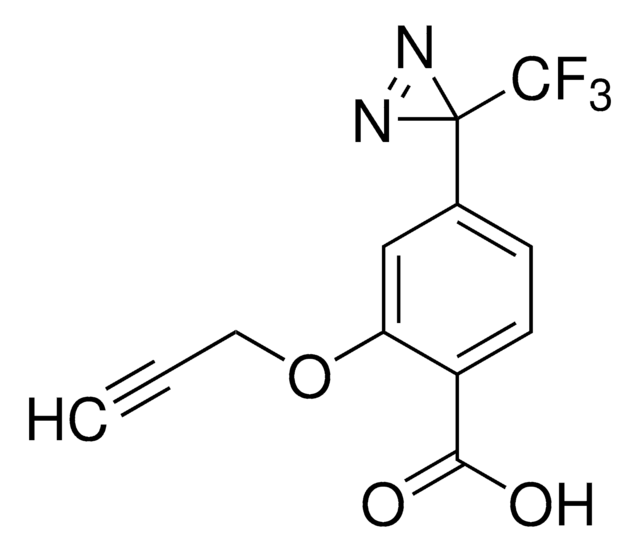921726
Bis-Diazirine polymer crosslinker
Synonym(s):
3,3′-((Perfluoropropane-2,2-diyl)bis(4,1-phenylene))bis(3-(trifluoromethyl)-3H-diazirine), BondLynx Gen-I
Sign Into View Organizational & Contract Pricing
All Photos(1)
About This Item
Empirical Formula (Hill Notation):
C19H8F12N4
CAS Number:
Molecular Weight:
520.27
UNSPSC Code:
12161502
Recommended Products
storage temp.
2-8°C
Quality Level
Application
This bis-diazirine molecule was designed to covalently crosslink low-surface-energy (non-functionalized) materials through the formation of highly reactive carbene intermediates that insert themselves into C–H bonds on adjacent polymer surfaces when activated by moderate heat or ~350nm light.
Our bis-diazirine molecule allow remarkably efficient and stable perovskite solar cells. A study showed it contribution to retaining nearly 99% of their initial efficiency even after 1,000 hours of continuous illumination. At constant heat (60°C) bis-diazirine treated PSCs maintained nearly 98% efficiency after 600 hours of continuous operation, whilst untreated lost 27% efficiency under the same conditions. Overall, bis-diazirine treated PSCs achieved a high certified efficiency of over 24% with long operational stability over 1,000 hours.
Further, it can be used in adhesive and textile strengthening applications. Diazirine crosslinkers don’t distinguish between polymer substrates and can be used to bond dissimilar materials like PP and PE together into rigid thermoset plastics. It has been demonstrated to bond polypropylene, high density polyethylene (HDPE), and other polymers to each other, and to strengthen ultrahigh molecular weight polyethylene (UHMWPE) textiles by crosslinking between individual fibers. Bis-diazirines may also have utility in tissue bonding applications.
Our bis-diazirine molecule allow remarkably efficient and stable perovskite solar cells. A study showed it contribution to retaining nearly 99% of their initial efficiency even after 1,000 hours of continuous illumination. At constant heat (60°C) bis-diazirine treated PSCs maintained nearly 98% efficiency after 600 hours of continuous operation, whilst untreated lost 27% efficiency under the same conditions. Overall, bis-diazirine treated PSCs achieved a high certified efficiency of over 24% with long operational stability over 1,000 hours.
Further, it can be used in adhesive and textile strengthening applications. Diazirine crosslinkers don’t distinguish between polymer substrates and can be used to bond dissimilar materials like PP and PE together into rigid thermoset plastics. It has been demonstrated to bond polypropylene, high density polyethylene (HDPE), and other polymers to each other, and to strengthen ultrahigh molecular weight polyethylene (UHMWPE) textiles by crosslinking between individual fibers. Bis-diazirines may also have utility in tissue bonding applications.
Caution
Diazirines react with light or heat to release nitrogen gas and form reactive carbenes. Although the product is bench-stable and can be weighed out under standard room lighting, it should be stored in a fridge or freezer, away from light.
Yoshida correlations and mechanical testing indicate that the product is not a likely explosion hazard, but all diazirines should be handled as potential shock-sensitive materials.
Yoshida correlations and mechanical testing indicate that the product is not a likely explosion hazard, but all diazirines should be handled as potential shock-sensitive materials.
Other Notes
Low Surface Energy (LSE) polymers such as polyethylene and polypropylene are extraordinarily useful materials that are increasingly found at the forefront of technological innovation, from ropes and mechanical parts to performance textiles and medical devices. This is because LSE polymers are relatively cheap to produce, can be molded to specific dimensions, and offer remarkable strength, durability, and resistance for such lightweight materials. However, these same qualities result in LSE polymers being extremely resistant to adhesion (gluing), layering, coating, and dyeing applications, which limits how these materials are used. In response to this challenge, we offer a highly reactive compound that chemically insert itself into unreactive polymer surfaces. In this way, it transform LSE polymers into materials that are no longer resistant to gluing, coating or other adhesion-based applications. This breakthrough “diazirine” technology is enabling the world’s most abundant polymers to be used in a host of new applications.
Signal Word
Danger
Hazard Statements
Precautionary Statements
Hazard Classifications
Org. Perox. C
Storage Class Code
5.2 - Organic peroxides and self-reacting hazardous materials
WGK
WGK 3
Flash Point(F)
Not applicable
Flash Point(C)
Not applicable
Choose from one of the most recent versions:
Certificates of Analysis (COA)
Lot/Batch Number
Sorry, we don't have COAs for this product available online at this time.
If you need assistance, please contact Customer Support.
Already Own This Product?
Find documentation for the products that you have recently purchased in the Document Library.
Our team of scientists has experience in all areas of research including Life Science, Material Science, Chemical Synthesis, Chromatography, Analytical and many others.
Contact Technical Service









